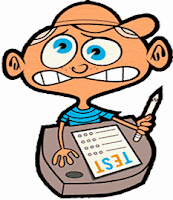Kids with ASD [level 1]: Gifted or Hyperlexic?

P a rents who have discovered that their young child is "gifted" because he/she may be able to recite the alphabet at 18 months of age - or can read words by the age of 2 - may want to reassess the situation. Hyperlexia often coexists with ASD level 1 [high-functioning autism]. Hyperlexia is not seen as a separate diagnosis; however, with current fMRI research revealing that hyperlexia affects the brain in a way completely opposite to that of dyslexia, a separate diagnosis may be on the horizon. Children with hyperlexia may recite the alphabet as early as 18 months, and have the ability to read words by age two and sentences by age three. Many are overly fascinated with books, letters, and numbers. However, the child’s ability is looked at in a positive light, so many moms and dads delay in getting their “precocious” youngster any help because they believe that he/she is a blooming genius. Hyperlexia has many characteristics similar to Autism, and because o


